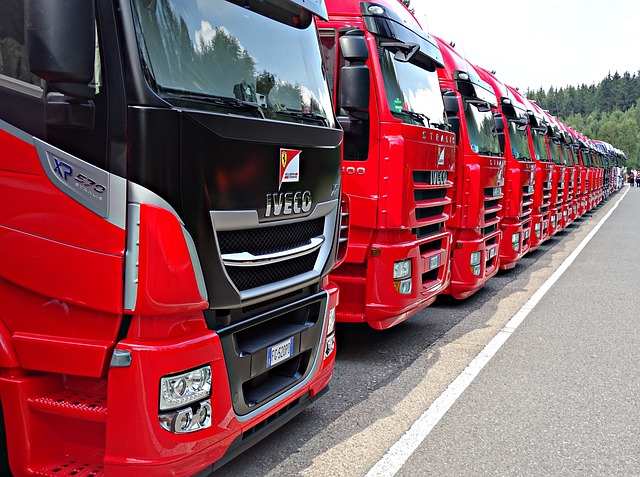Trucking businesses and small fleets require strategic management of worker's compensation (WC) to ensure legal compliance and operational success. By understanding the unique risks faced by fleet employees, owners can implement tailored WC policies, prioritizing employee injury protection. Key strategies include assessing risk factors, adopting a pay-as-you-go model, and regularly reviewing policies for compliance with legislative changes. "Workers comp fleet employees" and "trucking workers compensation" are crucial terms, offering affordable coverage that balances risk management and budget considerations while safeguarding operations and creating safer work environments.
In today’s dynamic work landscape, ensuring comprehensive worker safety and adequate coverage is paramount for businesses, especially those with fleet employees like trucking operations. This article offers expert guidance on navigating the complex world of workers compensation for fleets, from understanding basic coverage to implementing cost-effective strategies. We delve into essential considerations for small fleet employee insurance, compliance tips for trucking businesses, and protective measures for employee injuries, empowering employers to foster a safe working environment.
Understanding Workers Comp Fleet Employees: The Basics of Coverage

For trucking businesses and small fleets, managing employee safety and ensuring adequate coverage is paramount to operational success and legal compliance. Workers comp fleet employees, given their unique roles and risks, require specialized attention. Understanding the basics of fleet employee coverage is essential for business owners. These policies, often called workers compensation insurance, provide crucial protection against financial loss in case of on-the-job injuries or illnesses.
Trucking workers compensation specifically caters to the needs of these mobile workforces, offering tailored solutions for accidents and medical expenses. Affordable workers comp policies are readily available, allowing businesses to balance risk management with budget considerations. By prioritizing employee injury protection and adhering to workers comp compliance standards, trucking businesses can safeguard their operations and foster a safer working environment for fleet employees.
Strategies for Affordable Workers Comp Policies: Balancing Cost and Protection

For trucking businesses and small fleets with a limited number of employees, managing worker’s compensation (WC) costs while ensuring adequate protection can be challenging. The key to balancing cost and coverage lies in strategic policy planning. One effective strategy is to assess risk factors specific to your fleet operation. For instance, if your business involves long-haul trucking or high-risk cargo transport, implement safety protocols and training programs to reduce accident and injury risks. This proactive approach can lead to lower WC claims frequency, thereby reducing premiums.
Additionally, consider a pay-as-you-go (PAYG) model for workers comp insurance, which aligns costs with actual claims experience. This method eliminates the need for large upfront deposits and allows businesses to budget more predictably. Regularly reviewing and updating WC policies based on changes in legislation, industry trends, and your fleet’s performance is essential for maintaining compliance and optimal coverage.
Employee Injury Protection in Trucking Businesses: Navigating Compliance and Risk Mitigation

Trucking businesses must give top priority to employee safety and injury protection due to the inherent risks associated with the industry. One of the key aspects of risk mitigation is ensuring comprehensive fleet employee coverage, including trucking workers compensation. This involves navigating complex workers comp compliance regulations while securing affordable workers comp policies that cater to the unique needs of small fleets.
By prioritizing employee injury protection, trucking businesses can safeguard themselves from significant financial and legal risks. They should consult experts in fleet employee insurance to design tailored coverage that encompasses medical expenses, lost wages, and disability benefits for their drivers and other workers. This proactive approach not only protects the business but also ensures peace of mind, knowing that their employees are shielded from the long-term consequences of work-related injuries.
Small Fleet Employee Insurance: Essential Considerations for Safety and Legal Protection

Small Fleet Employee Insurance plays a pivotal role in safeguarding your trucking business and its employees from potential risks and financial burdens associated with workplace injuries. As a fleet operator, ensuring adequate coverage is not just beneficial but legally mandatory. Workers comp fleet employees is a cornerstone of risk management, providing essential protection for both the employer and workers. This insurance covers medical expenses and lost wages in the event of work-related injuries or illnesses, mitigating the financial impact on your business and offering peace of mind.
When considering small fleet employee insurance, focus on affordable workers comp policies that align with your trucking business’s unique needs. Explore options that offer comprehensive coverage, including medical benefits, disability payments, and death benefits. Additionally, look for policies that prioritize quick claim settlements to ensure efficient support for injured employees. Regularly reviewing and updating your worker’s compensation insurance is crucial to maintain compliance and adapt to the evolving landscape of trucking regulations.
Ensuring the safety and well-being of your workforce is paramount for any trucking or small fleet business. By understanding the unique needs of workers comp fleet employees and implementing strategic approaches to coverage, such as exploring affordable workers’ comp policies and navigating compliance, you can mitigate risks effectively. Employee injury protection should be a top priority, especially in high-risk sectors like trucking. With the right balance between cost and protection, businesses can foster a safe environment, comply with regulations, and safeguard their operations.
